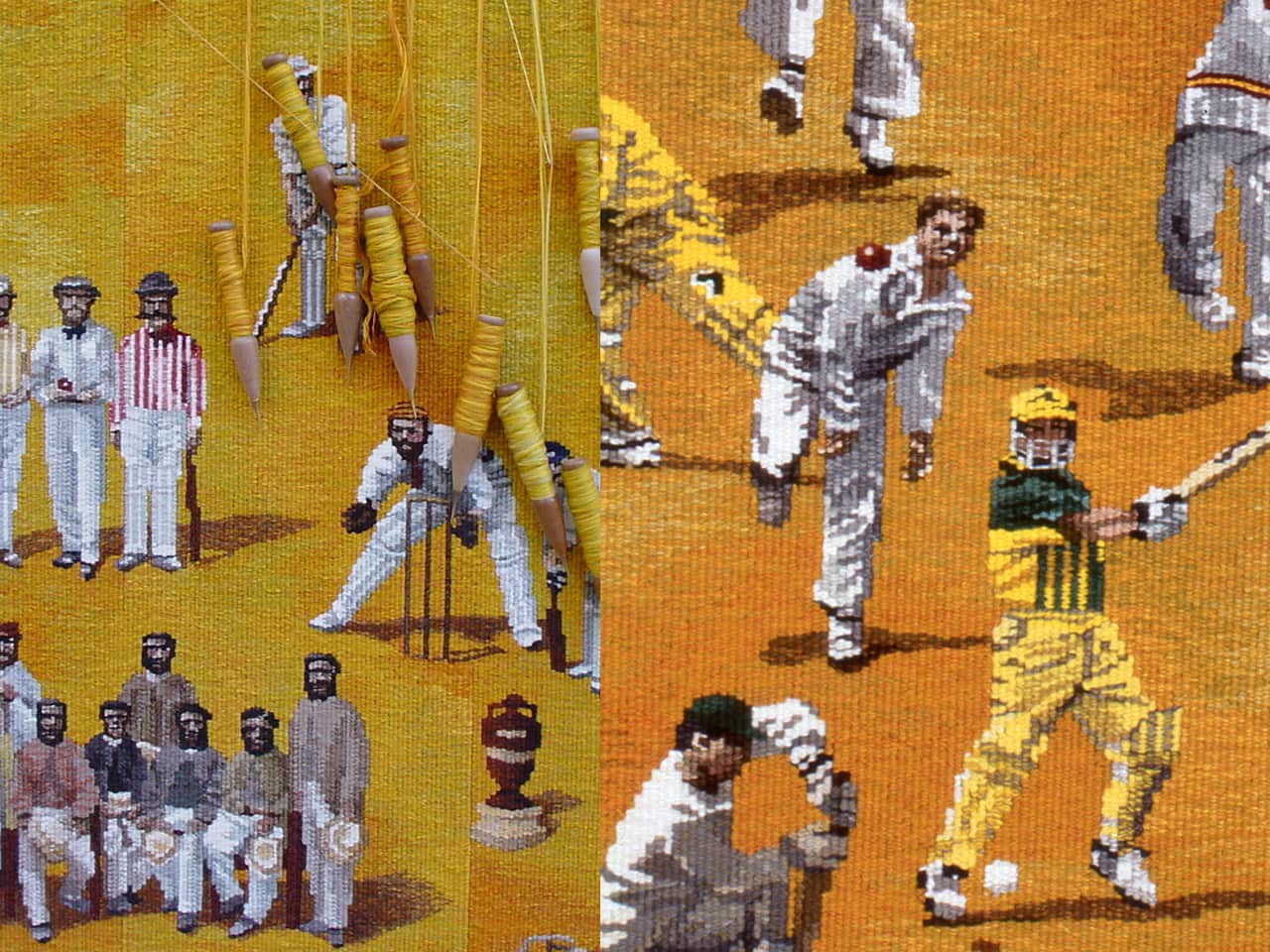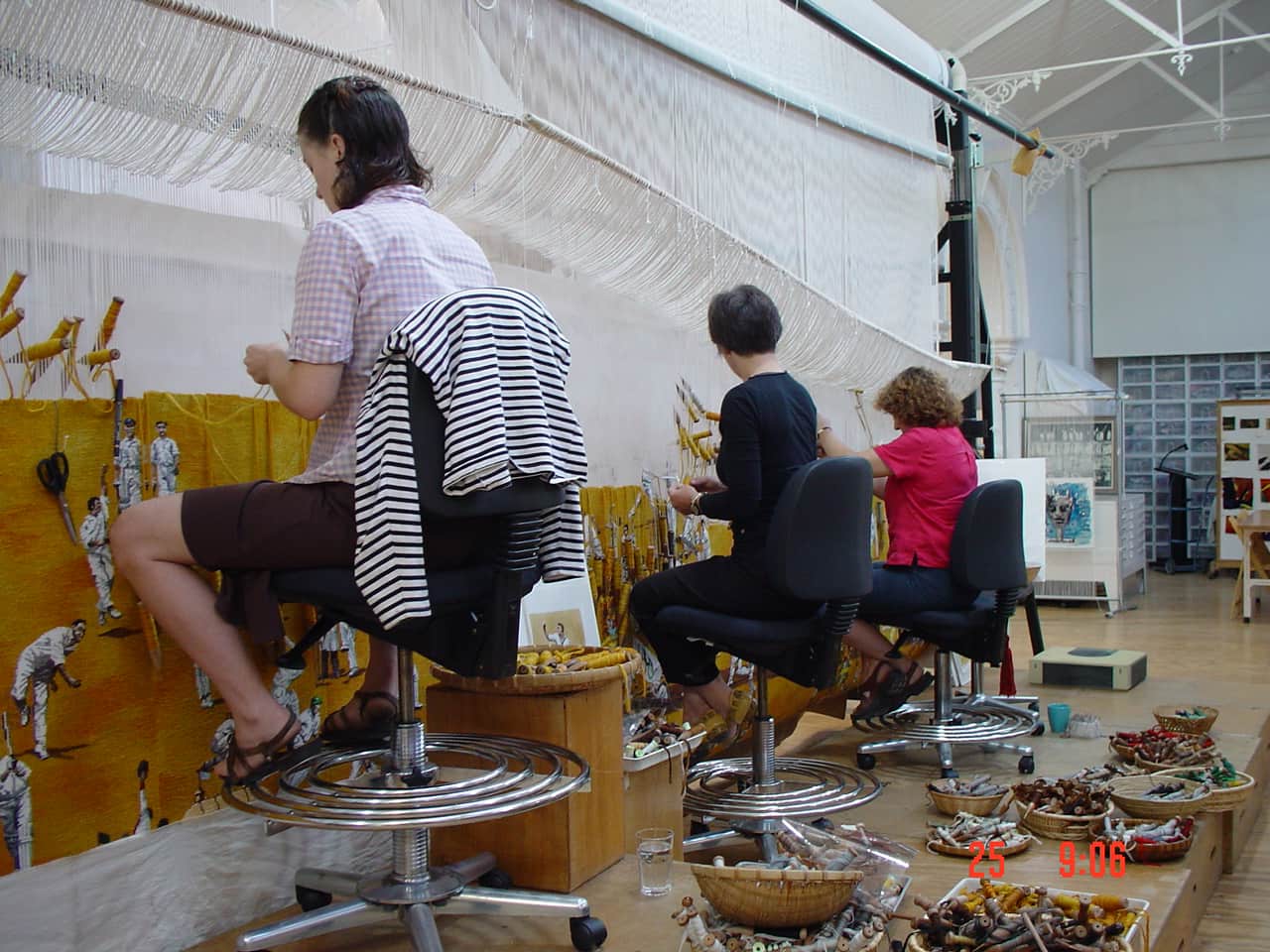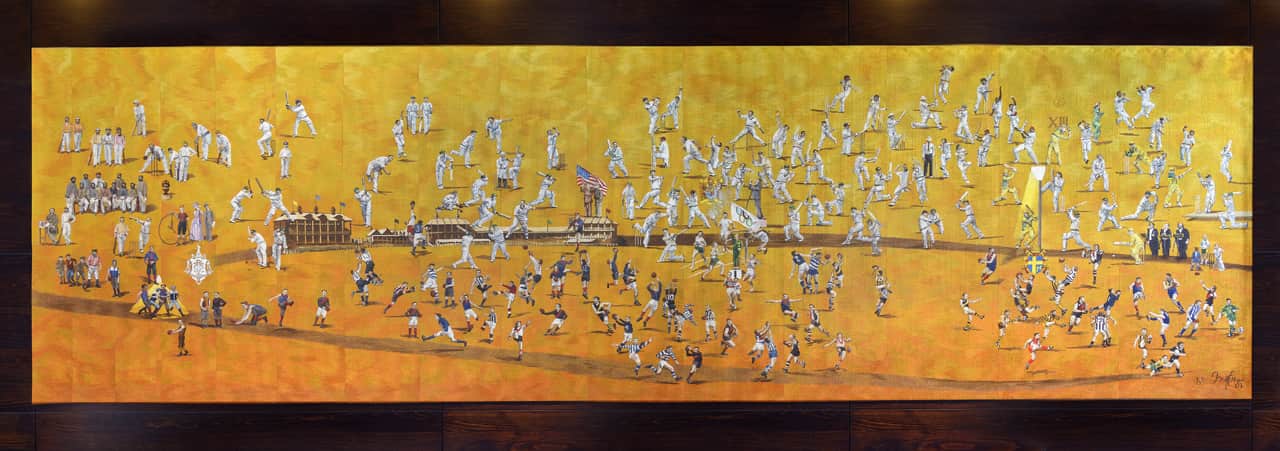


To celebrate the Melbourne Cricket Ground’s 150th anniversary, the Melbourne Cricket Club tapestry, designed by Robert Ingpen AM was woven by the ATW in 2002.
The monumental tapestry, measuring 2.00 x 7.00m, depicts key members of the Melbourne Cricket Club (MCC). Placed in chronological order, the figures depicted range from the MCC’s first president, Frederick Powlett, to champion Australian batsman-keeper Adam Gilchrist and Socceroo Kevin Muscat, who kicked Australia’s only goal in its 1-0 victory over Uruguay in a 2001 World Cup qualifying match.
Included are some of the greats of football and cricket, memorable sporting events such as the 1956 Olympic Games and Austral Wheel Races and other notable occasions like royal and papal tours, Billy Graham’s Crusade and the performance by the Three Tenors.
Ingpen painted the figures individually and then painted a broader yellow / orange canvas, allowing the weavers to position the figures as the tapestry developed on the loom.
The tapestry hangs proudly outside the Long Room at the MCG, where members and visitors can admire and identify those who have made a significant contribution to what the MCG is today.
Robert Ingpen is represented by Melaleuca Gallery in Victoria.
Rising suns over Australia Felix was the first of several tapestries designed by John Olsen AO OBE and woven by the ATW in 1997.
After working with tapestry workshops in France and Portugal in the 1960s, Olsen found the work of ATW weavers to be world-class and has been a steadfast supporter of the ATW ever since. Olsen is widely considered to be one of Australia’s most important living artists. He is known for his lyrical drawings and paintings that feature native Australian flora and fauna. His works are constructed with multiple meandering lines, energetic life-forms and the rich colours that make up the Australian landscape.
Rising suns over Australia Felix, commissioned by the Department of Foreign Affairs and Trade, was inspired on a return flight to Australia, at the exact moment when Olsen witnessed a sunrise and saw the ascending orb gradually illuminate the expansive land below. The scene is split into two distinct halves – sky and land – but in both realms the surface is dappled, suggesting the luminosity of the dawn scene. The monumental scale of the tapestry effectively conjures the vastness of the Australian continent.
Olsen’s work is housed in Olsen Gallery and has been collected widely by national and international institutions.
It was a true honour for ATW weavers to translate Untitled, designed by Anmatyerre elder Emily Kame Kngwarreye into a tapestry in 1997.
Kngwarreye was born at the beginning of the twentieth century and grew up in a remote desert area known as Utopia, 230 kilometres north-east of Alice Springs, distant from the art world that sought her work. She came to painting later in life, producing over 3000 paintings in her eight-year career—an average of one painting per day.
The extensive body of work that she produced was inspired by her experiences as an Anmatyerre elder and her custodianship and dedication to the women’s Dreaming sites of her clan country, Alhalkere.
In 1997 ATW weavers Grasyna Bleka and Milena Paplinska had the exciting challenge of interpreting Kngwarreye’s complex visual language into a tapestry.
Emily Kame Kngwarreye's work has been collected by many major Australian and international art institutions.
Emily passed away on September 2, 1996. The ATW hopes that her tapestry will stand as a reminder of her significant contribution and creative legacy.